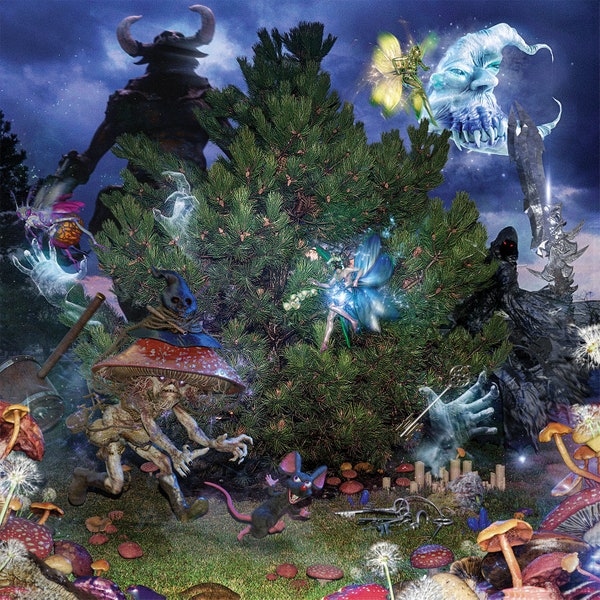Is Hyperpop the Future of the Music Industry?

December 22, 2020
Music is an enduring and ever-evolving form of media, so it is only natural for the question of “what is next?” to spring up quite often. While subgenres such as lowercase, cloud rap, and witch house are slowly showing themselves to have passionate listener bases, the most promising among these growing niche genres is hyperpop (otherwise known as bubblegum bass, glitchcore, or PC Music), a subgenre of pop music known for heavily distorted bass, synthesizers, and pitched vocals, and it is a strong contender for making a name for itself in the music industry’s future.
Subgenres that led to the creation of hyperpop date back to the early 2000s and the popularity of nightcore, a genre which consisted of pitched-up, fast-paced parodies. Much like hyperpop, nightcore embraced a uniquely hyper-feminine affect. In 2013, London producer Alexander Guy Cook (A.G. Cook) founded the record label PC Music, where he would later allow underground vocalists and producers to work with him and create music in a professional setting. Cook quickly began to draw attention when he began uploading his tracks to SoundCloud. Later, he would produce full-time for some of those who would become hyperpop’s biggest names, including Dorian Electra and Hannah Diamond.
It wasn’t until British pop star Charlotte Emma Aitchison (better known as Charli XCX) came aboard to work with Cook that hyperpop pushed into the mainstream. Ever since the genre’s blow up in 2018, some of hyperpop’s biggest acts, including Charli XCX, Dylan Brady & Laura Les (100 gecs), and Sophie Xeon (SOPHIE) have racked up a combined 9 million monthly listeners on Spotify, an astonishing explosion which is sure to exert influence on the broader music industry for years to come.
There are several mechanisms through which hyperpop could continue its expansion. One of these is through support from already established names. Earlier this year, Taylor Swift released “folklore,” a mellow folk-pop record consisting of some very traditionally non-radio-friendly music. Nevertheless, she managed to get her fans on board with this new direction, picking up even more listeners in the process. If a well-established artist such as Swift, Selena Gomez or Ariana Grande had the desire to create a hyperpop record fully produced by a prolific hyperpop figure like A.G. Cook or Dylan Brady, it could reach the ears of many mainstream listeners, pulling them towards its contemporary sound. The flashiness of the genre mixed with the abrasiveness of its maximalized production are easily adaptable and can mimic the experience that most mainstream music listeners are familiar with. Although hyperpop’s sound is less compatible with another growing genre, hip-hop (trap, specifically), the two are not entirely at odds, and there are many other lanes, such as that of cloud rap, that the genre could explore with ease.
There are plenty of experimental hip-hop acts that have been around for some time now. Hip-hop dabbling in amplified drum machines and hard synthesized beats could easily appeal to the genre’s established audience. With much of rap music today already consisting solely of drum machine production, adapting to a distorted bass and deafening snares is not a huge stretch. Growing hyperpop hip-hop artists such as Ecco2k, Brakence, and Glaive have been making waves in the mainstream already. All of these artists have their own unique sounds that can be considered highly adaptable and creative.
Perhaps the most prominent and promising example of the synthesis of hyperpop, hip-hop, and mainstream credibility can be found within the work of Rico Nasty. Earlier this year the rapper showed a new side of her music that fans instantly clicked with. Rico released a track called “IPHONE,” consisting of amplified production with metallic synthesizers and pitched vocals. “IPHONE” was produced by the frontman of the previously mentioned 100 gecs, Dylan Brady, one of hyperpop’s most well-known and important figures. Rico Nasty teamed up with Brady for a few more roll out singles, but then decided to play it safe and only include a few hyperpop tracks on her most recent record. Much of the success of “IPHONE” can be attributed to the social media platform TikTok, where it garnered millions of likes after being the subject of multiple trends and dances. Both Rico Nasty and her hit single incorporate elements of the larger hyperpop genre, spelling a promising future for the sound and serve as further evidence that hyperpop will continue its steady rise.


